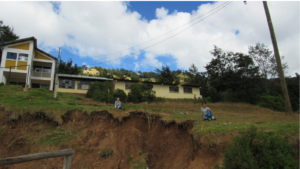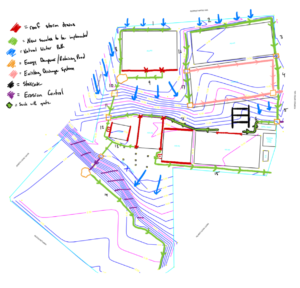Txemuj, Guatemala

Background
Txemuj, 10 minutes down the road from Paxoj, is the most remote aldea in the Huitán municipality. The region faces challenges similar to those in Paxoj, with the addition of greater geographical isolation. Being further from the center of Huitán, houses in Txemuj are farther apart and the roads are in worse condition, making transportation much more difficult.
The school itself is quite hard to reach; it requires a turn up a dirt road and is only accessible by a staircase which we just completed. The school is rather large, complete with 5 school buildings, 8 classrooms, and a kitchen. Like Paxoj, the children who attend the school come from numerous large families that live and farm maize on the land they own.
The staircase is the first project EWB-Vanderbilt completed at the school. In August of 2020, we also finished the installation of balcones, also known as window guards, to deter trespassers from damaging the property. We are currently designing a drainage system to address the erosion of the earthen wall in front of the school.
The elementary school in Txemuj that we are working with is built on the side of a mountain. At the base of the school, there is an earthen cliff that is about 15 meters in height. The region experiences frequent, heavy rainfall which has eroded much of the edge of the cliff and the infrastructure of the school. This puts the foundations of the school buildings at risk of cracking and structural failure. Additionally, unhindered erosion at its current rate could result in the school sliding off the hillside completely within a decade or two. EWB-Vanderbilt aims to design a drainage system to effectively reroute rainwater and prevent further erosion.
Goals
- Revise implementation plans based on feedback from EWB USA
- Complete implementation in Fall 2022
Accomplishments
- Conducted an assessment trip in Guatemala to obtain accurate dimensions for the slops of the earth around the school
- Created a preliminary map of where the swales will need to be constructed
- Determined the rainfall intensity of the region through a rainfall intensity duration frequency curve
- Performed all necessary calculations and designs for the project
- Submitted pre-implementation plan
